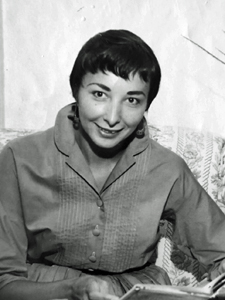William Frederick Bissett is a Canadian poet known for his unconventional style.

Barrie Phillip Nichol, known as bpNichol, was a Canadian poet, writer, sound poet, editor, Creative Writing teacher at York University in Toronto and grOnk/Ganglia Press publisher. His body of work encompasses poetry, children's books, television scripts, novels, short fiction, computer texts, and sound poetry. His love of language and writing, evident in his many accomplishments, continues to be carried forward by many.
Canadian poetry is poetry of or typical of Canada. The term encompasses poetry written in Canada or by Canadian people in the official languages of English and French, and an increasingly prominent body of work in both other European and Indigenous languages.
George Harry Bowering, is a prolific Canadian novelist, poet, historian, and biographer. He was the first Canadian Parliamentary Poet Laureate.
Frankland Wilmot Davey, FRSC is a Canadian poet and scholar.
Lionel John Kearns is a writer, educator, philosopher and polyartist, known for his innovative literary forms, and his contributions to the field of digital poetics.He is recognized as an early and significant poet in the history of Canadian avant-garde literature.

Phyllis Webb was a Canadian poet and broadcaster.
TISH was a Canadian poetry newsletter founded by student-poets at the University of British Columbia in 1961. The publication was edited by a number of Vancouver poets until 1969. The newsletter's poetics were built on those of writers associated with North Carolina's Black Mountain College experiment.
Warren Tallman was an American-born poetry professor who influenced the Vancouver Tish poets.
Frederick James Wah, OC, is a Canadian poet, novelist, scholar and former Canadian Parliamentary Poet Laureate.

The Collected Books of Jack Spicer first appeared in 1975, ten years after the death of Jack Spicer. It was "edited & with a commentary by Robin Blaser" and published in Santa Rosa, California by Black Sparrow Press. A primary document of the San Francisco Renaissance, The Collected Books of Jack Spicer has arguably reached the status of a twentieth century "classic" and helped to define an emerging countertradition to the prevailing literary establishment. Since this edition has gone out of print, it has been updated, revised and republished as My Vocabulary Did This To Me. The Collected Poetry of Jack Spicer, Edited by Peter Gizzi and Kevin Killian.

George McWhirter is an Irish-Canadian writer, translator, editor, teacher and Vancouver's first Poet Laureate.
Marion Alice Coburn Farrant is a Canadian short fiction writer and journalist. She lives in North Saanich, British Columbia.
Gerry Gilbert was a Canadian poet famous in underground literature for his deliberate eschewing of all awards and competitions as he felt that personal ambition in art led to a lack of sincerity. He was known as Vancouver's bicycle poet.
grOnk, or GRoNK, was a Canadian literary magazine begun in 1967 by bpNichol and others (for example, David Aylward, David W. Harris, and Rah Smith. After the primary 8 series of 8 issues each were published, it was Nichol's efforts that maintained the irregular periodical, with guest editors including Nelson Ball, jwcurry, Steve McCaffery and R. Murray Schafer. An offshoot of Ganglia Press's Ganglia magazine, grOnk began with material gathered for Ganglia's sixth issue and became a monthly publication focusing on concrete poetry and "the language revolution" underway in Canada at the time, publishing a wide variety of "extralinear" writing from an international cast of contributors anchored in a context of parallel developments in Canadian literature. "GrOnk brought together British, Czech, American, Canadian, French and Austrian concrete and experimental practitioners..."
David UU, or David W. Harris, (1948–1994) was an accomplished concrete and experimental poet and an important small press publisher. Along with Bill Bissett and bpNichol, he was a pioneer of the concrete poetry movement in Canada, and perhaps the first Canadian poet to explore visual collage embodying literary, philosophical and language references. He also composed sound works, made 8mm short films, was a master collagist/montagist and performed in numerous performance art exhibitions.
"And I should mention to you that my last name is...just UU, the original form of the English letter W, which is also how it's pronounced." - David UU
Adeena Karasick is a Canadian poet, performance artist, and essayist. Born in Winnipeg of Russian Jewish heritage, she is the distinguished author of 13 books of poetry and poetic theory, as well as a series of parodic videopoems, such as the ironic "I Got a Crush on Osama" that was featured on Fox News and screened at film festivals, Ceci n'est pas un Téléphone or Hooked on Telephonics: A Pata-philophonemic Investigation of the Telephone created for The Media Ecology Association, "Lingual Ladies" a post-modern parody of Beyoncé's "Single Ladies", and "This is Your Final Nitrous" a poetic response to the Burning Man Festival., and White Abbot, a parodic videopoem Karasick created during the writing of Salome: Woman of Valor, dedicated to the impossible anguish of forbidden love.
Andrew Suknaski was a Canadian poet and visual artist.
Intermedia was a Canadian artists' association active in the late 1960s and early 1970s, based in Vancouver, British Columbia.
Robert Hogg was a Canadian poet, critic, professor, and organic farmer.




